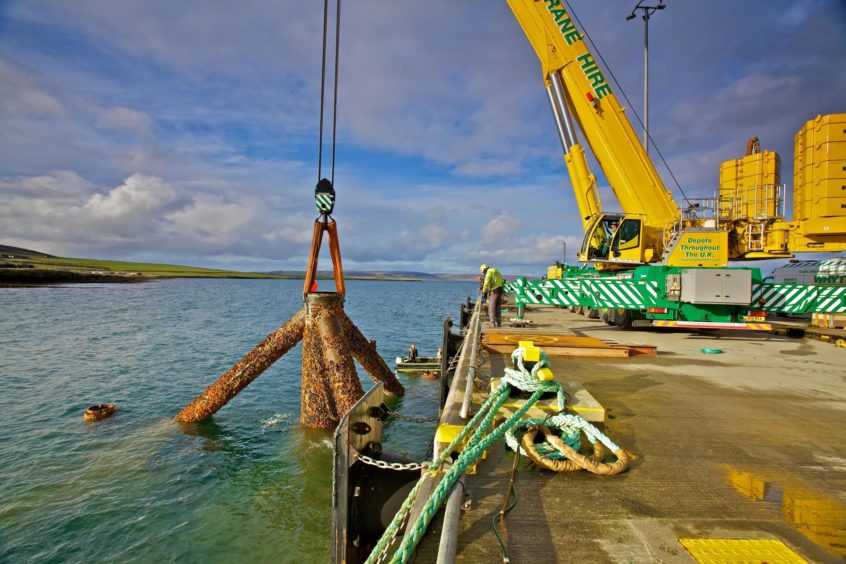
A project in Orkney aimed at reducing the costs of decommissioning offshore renewables developments has been completed.
The collaborative study at the European Marine Energy Centre (EMEC) gained a “comprehensive understanding” of the end-of-life condition of a tidal energy tripod, which has been submerged for approximately 11 years and had two turbines operated on it.
Engineers were able to assess the long-term impact of deployment components and systems in the “challenging high velocity” environment at the Fall of Warness test site.
Learnings have now been collated into two reports to provide feedback and design guidelines to the offshore renewable energy industry.
The first report highlights supply chain lessons regarding the tools required to cut and lift the tripod from the seabed in high tidal currents, while the second report focuses on learning for the design and manufacture of the foundations themselves with regard to biofouling, corrosion and metals.
John Skuse, Operations and Maintenance Manager from EMEC said: “Decommissioning is a critical part of the lifecycle of ocean energy projects, however it’s not yet well explored, as relatively few ocean energy technologies have progressed to the decommissioning stage following long-term deployment.
“It is imperative that decommissioning is managed carefully, including design stages, installation, performance, right through to decommissioning. As the industry continues to develop and mature, the ability to decommission devices efficiently and cleanly will be instrumental in ensuring site utilisation is maximised.”
EMEC contracted Leask Marine to remove the tripod foundation from the Fall of Warness test site.
The Orkney-based marine operations provider designed and fabricated a new robust cutting tool support frame to mitigate the impact of the strong currents.
The specifically designed frame had a buoyancy system added to help lift the 140-ton structure from the seabed in one operation.
Forensic analysis was carried out by Blackfish Engineering Design, the International Centre for Island Technology (ICIT) at Herriot Watt University, Rovco, Brunel Experimental Techniques Centre and Brunel Centre for Advanced Solidification Technology.
Tim Warren, engineering director Blackfish, said: “This decommissioning project has provided really valuable data for engineering designers and project developers of offshore renewable devices. A detailed examination of the biofouling, corrosion and performance of different structures, materials and coatings has provided a great insight into the long term performance of submerged components and how the design can be improved to ensure longevity and performance for their entire lifetime.
“By publishing this project and the lessons learned to the wider offshore renewables industry, it is hoped that future devices will benefit from this by reducing costs and improving decommissioning operations.”
Douglas Leask, managing director Leask Marine, said: “The decommissioning of TGL tripod has been an excellent project for Leask Marine by utilising the full resources of the business, from marine consultancy, detailed engineering, procurement, fabrication, vessel charter, commercial diving, and using the latest subsea technologies. The whole project was a positive experience in decommissioning subsea structures safely and cost effectively.
“This decommissioning project has been a real learning exercise on creating customer value and lowering costs for the decommissioning of large subsea assets in the industry. This knowledge base allows future developers accessible operational tooling that can meet the challenges ahead in the decommissioning of future offshore renewable energy arrays.”
Recommended for you

